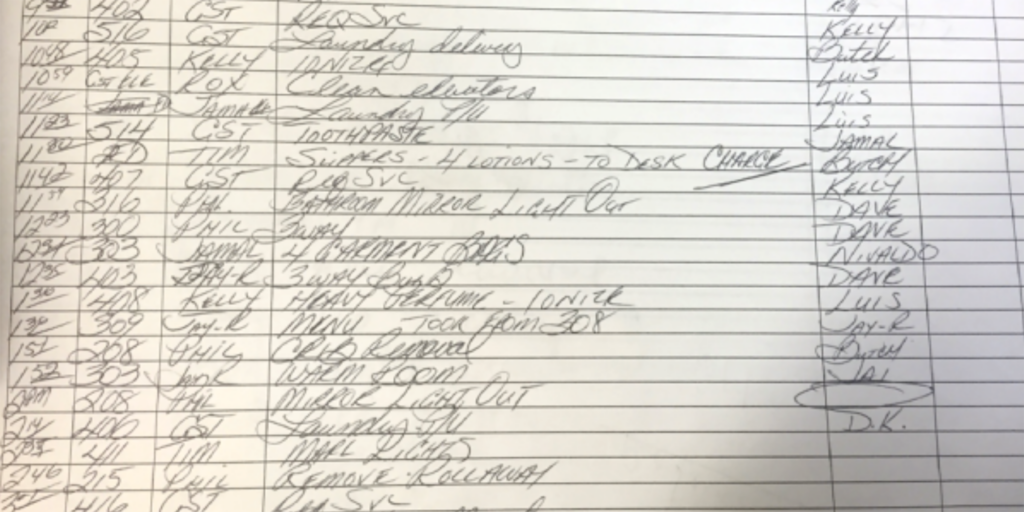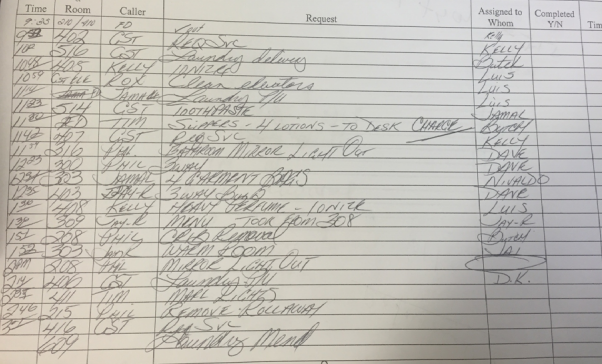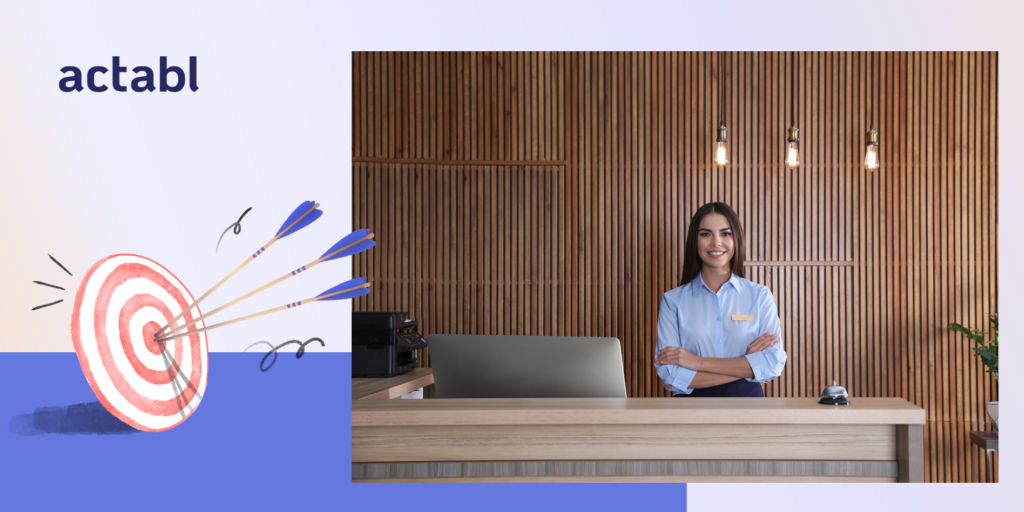
3 Challenges to Operating Your Hotel as a Platform
Three challenges hotels face in operating as a platform include unifying guest engagement, limiting analog communication, and simplifying back-end systems.
From Amazon in retail, to Uber in transportation and Airbnb in hospitality, a variety of businesses across multiple industries are embracing platform technology strategies.
For the hotel industry, the platform model (one that leverages technology to unify end-to-end operations) enables the receiving, dispatching, monitoring and analyzing of service requests with exceptional precision, allowing hotels to optimize their operations while engaging directly with and owning their guests.
However, as many hotel owners will admit, embracing this new platform model is not as simple as flipping on a light switch. What are the areas where hotels have the biggest opportunity to evolve their service model toward the platform approach? And what are the biggest obstacles that prevent them from doing so?
What Is Required For Hotels To Harness The Power of a Platform?
Embracing the platform strategy requires hotels to think about their operations more holistically.
The platform model, as applied to hotels, is one that is:
- Unified: guests and staff can interact in real-time across any device
- Open: other channels and vendors can plug into the platform easily
- Sticky: the platform creates value, attracts guests, and makes things personalized
Creating a system that is unified, open and sticky can unlock the platform living within a hotel, creating significant cost savings, improved efficiency, and increased revenue opportunities in the process. In order to apply these principles, we need to understand what stands in the way. Below are three challenges, including unifying guest engagement, limiting analog communication, and simplifying back-end systems.
Unifying Guest Engagement
One of the biggest challenges facing hotel operations is there are too many ways a guest can interact digitally with a hotel: via web, SMS, email, social media or apps. These channels are often not well-integrated and it can make monitoring and responding to the right channel at the right time tricky.
This is a problem of stickiness. In order to engage guests, hotels need to catch their attention in the appropriate channel at the appropriate time. The engagement might occur during booking, pre-arrival via email or SMS, or during their stay via mobile app or SMS. Each of these channels are independent solutions that do not provide a holistic infrastructure to integrate into staff operations. With the rise of social messaging, this omni-channel problem is only getting worse.
“Guests look at their hotel as a single unit. They expect to be able to request services from any department through their channel of choice and for those requests to be shared across the property, which is not currently possible,” says Alex Shashou, President of ALICE. From this perspective, the issue of stickiness is actually caused by the lack of a unified system. ”Ultimately decision makers are thinking about elements that drive shareholder value, and that is guest stickiness and guest satisfaction. You need an end-to-end platform to be able to do that.” observes Prakash Shukla, 2016 HFTP International Hospitality Technology Hall of Fame Inductee and ex-CIO of Taj Hotels.
Guests will choose to engage differently based on their needs and stage of their stay. Each engagement point provides an opportunity to gain or lose stickiness. “Hotels see ROI from delivering authentic experiences,” Shukla adds. “Experience and authenticity comes from a consistent end-to-end service. If I have a good check-in process and room service messes up, that is no good, and I will write about the bad experience that I had. If I have a hotel with a great ambiance, but they screw up on my airport pickup, I am going to write about it. It comes down to the weakest link phenomenon.”
Limiting Analog Communication
Another barrier to building a hotel-specific platform is that analog communication is still very prevalent. Many hotel employees rely on radios, pagers and even pen and paper as the norm for internal communications. According to a 2015 survey from the hotel management software consultancy firm, Software Advice, 25% of U.S. hoteliers still use pen and paper to manage their entire properties, and another 16% of respondents said they had no system at all (aka 100% analog).
“Analog communication prevents a hotel from achieving a unified operation since it is disconnected from software solutions,” says Shashou. Interactions have no traceability, and provide no audit trail. Guest requests are not captured in a searchable place, meaning the hotel can’t learn about guest habits over time, even though the staff is fulfilling them. Steven Goldman, EVP at the Amsterdam Hospitality Group, says there’s an opportunity cost to running a hotel with analog tools: “If you’re not tracking, you have no idea what your issues are and then you can’t fix them.” “Generally speaking, hotels are still operating in the old environment, with [workers] walking around with two-way radios,” says Bill Watson, co-founder at The Prism Partnership. “Much of that is going to change … as they consider new technologies coming along” noting that the industry tends to update its gear in five- to seven year cycles.
With heightened expectations of personalization, accessibility and transparency, radios are insufficient tools. In some contexts it is critical to know the VIP status of a guest, or their history of previous requests. Radio communications have no context and limit the quality and breadth of the interaction. Radios are also strictly staff to staff, and serve as a “closed circuit, [meaning] while they talk internally they don’t talk to anyone else. The internet talks to everybody,” said Shukla.
“Hotels have processed this way for decades,” said John Kim, chief e-commerce officer for HomeAway. “So I could see the resistance to an idea of how you run your workflow.” Kim ran a hotel when he was in college and used a clipboard to monitor operations. “It’s super-easy,” he said. “You create a list and if you want to know if anything’s outstanding, you look at the clipboard and see who’s on it.”
While Kim emphasizes that might be an adequate approach for a small hotel, for bigger ones, it’s unworkable. A radio does not provide an easy way to track fulfillment, note gaps, or simply give the guest space to complain. “One of the reasons that’s so inefficient is there are often times when the guest won’t tell you [that a service went wrong.] The first time you find out there’s an issue is when you see a review.” The best way to solve this problem is by bringing the guest and staff together onto a shared platform to enable seamless communication.

Simplifying Hotels’ Back End Systems
Many hotels operate using a disconnected range of systems across their various departments. Since integrating these systems is costly, many exist as standalone solutions. This creates a lot of redundancy as staff navigate between various “islands” of information that collectively make up the guest journey. “It’s scattered. I wish I had a dashboard, a single place where you can get all of the information that you need, at any time, with real-time updates,” said Osama Aduib, general manager at Hotel Americano.
Having staff on different systems also presents a problem of standardizing operations. It becomes virtually impossible to provide a consistent experience across every department, let alone every hotel in a group. As requests get fulfilled by the relevant staff members, there is no central place to track progress. A hotel is required to staff central dispatchers to guarantee that a guest request will be responded to within a certain window across departments.
The property management system (PMS) is the one common system that integrates with many service systems, but it is not built for unifying operational requests. For this reason, department specific systems must be connected directly to one when sharing is important to operations. However there is no central clearinghouse for all hotel requests, hence management is limited in its ability to view, analyze and improve the operation as a whole.
This is a barrier to ensuring that brands can deliver on their brand promise, which includes certain service quality expectations. According to Deloitte, executing on the brand promise requires the hotel to measure and monitor execution. Without a central place to capture the requests handled by hotel staff, management is unable measure and monitor execution. This prevents brands from accessing the health of their brand promise at any individual property. With these limitations, it is impossible for a hotel to effectively foster the exchange and co-creation of value by staff to guests, which is critical for a unified platform.
Look for a future post, in which we will outline the 3 ways hotels can overcome each of these obstacles to operate as a platform.
Download our full report, “The Hospitality Industry’s New Platform Paradigm” for a complete overview of how hotels can harness the platform approach to increase revenue, cut costs and improve guest satisfaction.
{{cta(‘f8cb3079-e89f-4252-ba63-d0bf9fa05d56′,’justifycenter’)}}







